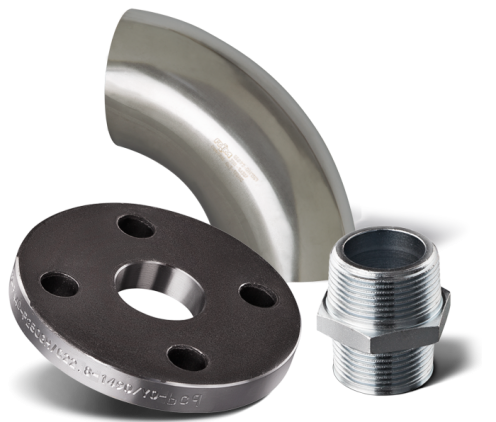
Image Source: Google
Stainless steel threaded joints are a common and versatile component in many industries, including construction, plumbing, and manufacturing. These joints are used to connect pipes, fittings, and other components in a secure and leak-proof manner. Understanding how to properly utilize and maintain stainless steel threaded joints is crucial for ensuring the efficiency and longevity of your systems.
In this comprehensive guide, we will explore the benefits of stainless steel threaded joints, the different types available, best practices for installation and maintenance, and tips for troubleshooting common issues. You can also contact Eco Fitting & Valve if you are looking for the best stainless steel threaded joint.
One of the primary advantages of stainless steel threaded joints is their durability and resistance to corrosion. Stainless steel is a strong and sturdy material that can withstand high levels of pressure and temperature, making it ideal for applications where reliability is essential. Additionally, stainless steel is highly resistant to rust and corrosion, which helps to prolong the lifespan of threaded joints and reduce the need for frequent replacements. This makes stainless steel threaded joints a cost-effective and long-lasting solution for many industrial and commercial environments.
There are several different types of stainless steel threaded joints available, each with its unique characteristics and applications. The most common types include NPT (National Pipe Thread), BSPT (British Standard Pipe Thread), and metric threads. NPT threads are widely used in North America and are designed to create a tight seal when tightened, making them suitable for high-pressure applications. BSPT threads, on the other hand, are commonly used in Europe and Asia and have a tapered design that helps to prevent leaks. Metric threads are used in various industries and are measured in millimeters, making them a versatile option for different applications.
Proper installation is crucial for ensuring the effectiveness and longevity of stainless steel threaded joints. Before installing a threaded joint, it is important to clean and inspect the threads to ensure they are free of debris and damage. Using a high-quality lubricant can help to reduce friction and make it easier to tighten the joint securely. It is also essential to use the correct tools, such as a pipe wrench or adjustable wrench, to ensure that the joint is tightened to the appropriate torque specifications. Over-tightening can cause damage to the threads, while under-tightening can result in leaks and other issues.
Maintaining stainless steel threaded joints is relatively straightforward, but it is essential to conduct regular inspections to identify any potential issues before they escalate. Inspecting the joints for signs of corrosion, leaks, or damage can help to prevent costly repairs and downtime. If any issues are identified, it is important to address them promptly by replacing the damaged components or re-tightening the joint as needed. Additionally, applying a protective coating can help to extend the lifespan of stainless steel threaded joints and further reduce the risk of corrosion.
Despite the durability and reliability of stainless steel threaded joints, issues can still arise from time to time. One of the most common problems is leaking, which can occur due to overtightening, undertightening, or damage to the threads. If a leak is detected, it is important to address it promptly by re-tightening the joint or replacing the damaged components. Another common issue is galling, which is a form of wear that can occur when the threads are tightened too much or too quickly. To prevent galling, it is important to use the correct tools and lubricants and to avoid over-tightening the joint.
In conclusion, stainless steel threaded joints are a powerful and versatile component that can provide reliable and leak-proof connections in a wide range of applications. By understanding the benefits of stainless steel threaded joints, the different types available, best practices for installation and maintenance, and tips for troubleshooting common issues, you can maximize the efficiency and durability of your systems. Whether you are working in construction, plumbing, manufacturing, or another industry, stainless steel threaded joints can help you achieve secure and long-lasting connections that will stand the test of time.